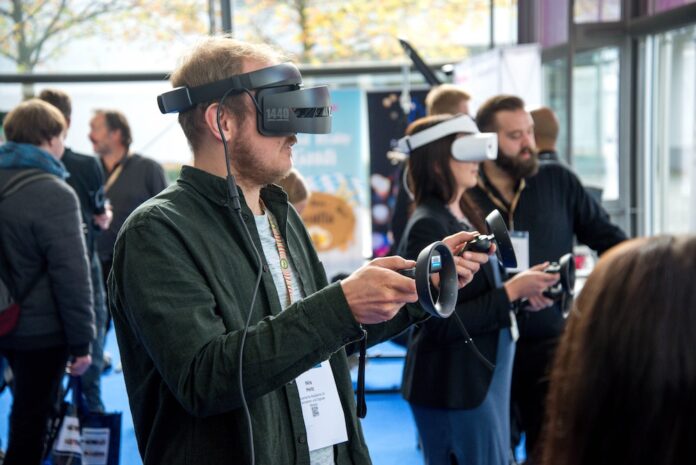Explore the commercial reality of 5G
UK government agency Digital Catapult (DC) has exemplified how it hopes to stimulate invention and economic growth in the UK’s telecoms sector, following this week’s announcement that £50 million will be invested in 5G. DC has joined forces with arts body Brighton Dome & Brighton Festival (BDBF) to launch Heritage XR, a cohort of three pioneering immersive experiences inspired by the history and heritage of Brighton Dome’s Corn Exchange. Brighton Dome has its own private 5G network, built with a £2.2m grant from the Department for Digital, Culture, Media & Sport (DCMS), which can be used to explore the potential of the technology.
The pact has selected three companies to relate the history of Brighton’s ancient Corn Exchange using augmented reality (AR), ambisonic sound and 5G. The challenge has been handed to Immersive Networks Collective, production studio OmBeond and alternate reality specialist SenseCity to create the interactive experiences that make the venue’s rich heritage awaken the imagination of the public. The idea is to inspire creativity so that people taking part can see how 5G might make their personal and work lives more fulfilled and productive.
The participants have been set a high bar. The mundane sounding Corn Exchange was originally the Prince Regent’s Riding House and part of Brighton’s Royal Pavilion Estate. According to DC the Corn Exchange boasts a rich and varied history. IT served as a hospital in the first World War and playing a key role during Brighton’s suffragette movement, more of which can be experienced virtually. The resulting headset experiences will provide visitors with the opportunity to immerse themselves in Brighton Dome’s rich architectural and social history.
One of the activities within the domain of the Digital Catapult is FutureScope, a programme of initiatives that supports the growth of the UK’s technology inventors and businesses. FutureScope provides businesses with the technical and commercial skills needed to develop and scale, while connecting them with relevant industry partners, investors and potential customers. When companies join FutureScope, they get access to Digital Catapult’s ‘state-of-the-art’ resources at locations across the UK and support from its network of innovators, technologists, investors, industry leaders and academics. The programme accepts businesses of all sizes.
The FutureScope Heritage XR programme is supported by another recipient of public funds, Wired Sussex, which is a 16-week initiative designed to drive ideas and innovation utilising 5G and immersive experiences within the UK heritage sector. BDBF claimed that its collaboration with Digital Catapult has made it the emerging as a leader in the intersection of technology, arts, heritage and culture. The Brighton Dome venue previously hosted 5G Festival, a world first, and is the only cultural venue in the UK hosting a 5G testbed. “Together, these projects are leading examples of the partners’ drive to adopt the latest technologies and support long term economic growth in the UK’s world-leading arts and entertainment industries,” said the organisers, in a statement.
Brighton-based Immersive Networks Collective combines machine learning (ML) and big data analytics to transform complex information into interactive narratives and recreate the past. OmBeond said it combines well-being, multi-sensory design and immersive technology to build immersive experiences. SenseCity uses dynamic augmented reality (AR) technology to create immersive walking tours. The question is: will this inspire the British public to invest time, energy and money on inventing new uses for 5G?
Jessica Driscoll, Director of Immersive Technology at Digital Catapult, was confident that technology is best showcased when in the hands of the arts sector. “Technology is bringing the arts, culture and heritage sector into an exciting new era,” said Driscoll, “we couldn’t think of a better place to demonstrate why immersive experiences offer a fresh perspective for audiences. Not only do these multi-sensory experiences bring history back to life, but they tell stories that appeal to and resonate with all ages, effectively combining education with entertainment.”



